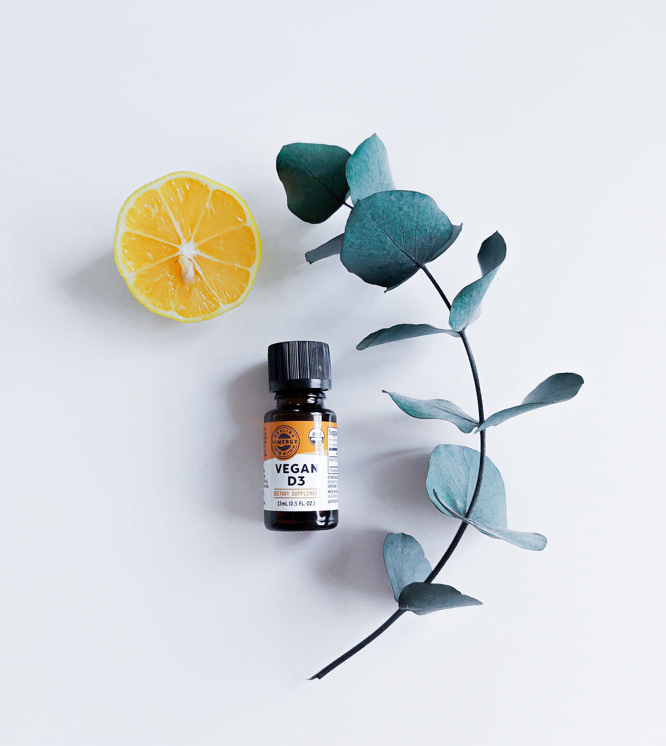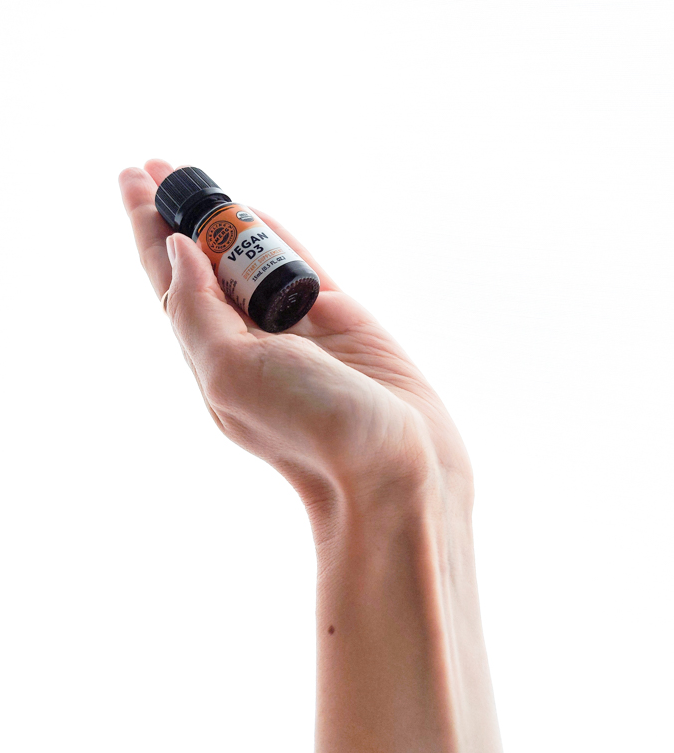Vitamin D plays a responsible role in our bodies – it is responsible for the health of our bones and teeth, as well as the effective functioning of our immune system. But how can you recognise vitamin D deficiency and what causes it? What are the best sources of vitamin D? Let’s take a closer look.
Vitamin D – why do we need it?
Vitamin D is crucial for bone health, responsible for the absorption of calcium and phosphorus in the digestive tract and their storage in bones and teeth. Vitamin D supports the nervous system, skin health, regulates the formation of cancer cells and helps regulate blood sugar levels. In addition, vitamin D is actively involved in the immune system as well as in cardiovascular function.
Sources of vitamin D: which is best?
The best natural source of vitamin D is undoubtedly natural sunlight, which enables the body to synthesise vitamin D on its own. Optimal time in the sun should be 15-30 minutes every day, letting the sun shine on you. However, in our northern climate, this is not always possible all year round, so unfortunately we cannot rely on sunlight alone and should seek refreshment from other sources.
Vitamin D in food
Other naturally occurring sources of vitamin D include mushrooms, and to a lesser extent spinach, kale, soya beans, white beans, orange juice, oatmeal and fish.
However, the highly bioavailable plant-derived vitamin D3 is also an excellent aid, providing us with sufficient supplementation during the winter.

Why vitamin D3?
Exposure to sunlight causes the skin to produce a specific vitamin D called vitamin D3. Vitamin D3 maintains blood levels of vitamin D significantly better than vitamin D2. As getting enough sunlight all year round is relatively difficult, especially in the Estonian climate, a good quality D3 supplement comes to the rescue to help keep our vitamin levels within the norm.
Vitamin D deficiency
Vitamin D deficiency manifests itself in many ways. The first signs may be a lack of strength, muscle weakness or general tiredness and fatigue.
In addition, there may be:
- heaviness in the legs;
- bone pain;
- frequent colds;
- mood loss and depression;
- dizziness;
- unisus;
- high blood pressure;
- microtraumas and bone thinning;
- cognitive impairment.
How to prevent vitamin D deficiency?
You can easily prevent vitamin D deficiency by following 4 important steps:
- Make sure your diet is colourful and varied. Increase the proportion of green leafy vegetables in your diet and avoid processed foods if possible.
- Look after your liver and gut health. Keeping your liver and digestive tract healthy also ensures regular absorption of nutrients, including vitamin D.
- Try to spend as much time as possible in sunlight. Remember that 5 minutes is better than nothing!
- Supply your body with a quality D3 supplement. This way you can be sure that your body has enough vitamin D all year round. Try for example Vimergy Vitamin D3 of plant origin !
When does vitamin D help?
Vitamin D is worth consuming for all-round support of the body, for the prevention of health problems, and also in the event of cold symptoms or any other symptom indicating a vitamin D deficiency. It’s always a good idea to have good quality vitamin D on hand to keep your body toned and your immune system strong. This is especially true in the dark autumn months, when sunlight is relatively scarce.

What does the medical media say about vitamin D?
According to medical journalist Anthony William, vitamin D deficiency is not really the most important thing we should be focusing on (compared to chronic zinc deficiency, for example). However, a small amount of vitamin D can still be beneficial and, for many, play an important role in healing. However, it is worth noting that in order for our body to absorb vitamin D properly, our liver – the organ responsible for vitamin D absorption and utilisation – must first be healed. Thus, there are three essential components to replenishing vitamin D stores: getting direct sunlight on the skin, repairing the liver and, if necessary, taking some vitamin D supplementation. Sunlight is also retained by fruit, which is definitely worth keeping on the menu.
The medical media has also mentioned that it is not advisable to take too much vitamin D, or to take vitamin D megadoses – a technique that has gained popularity in alternative medicine over the last decade. In the case of megadoses of vitamin D (15 000 IU or more), the body thinks it is a foreign body and does not absorb vitamin D at all, but tries to excrete it. It should also be noted that the risk of blood thrombosis has been observed when vitamin D and vitamin K are consumed in high amounts together.
Vimergy vitamin D3: why choose it?
In order to get the maximum benefit from a food supplement, the quality of the supplement is essential. Vimergy D3 is 100% herbal and made from cholecalciferol-rich moss extract, beating many other animal-based vitamin D3 preparations. Vimergy Vitamin D3 Each serving contains 1000IU (25mcg) of vitamin D3 and is free from bulking agents, alcohol, any GMO ingredients, additives, citric acid and other inappropriate hidden ingredients. This product is organic and vegan and created in the best concentration. Vimergy D3 contains only vitamin D3 and organic coconut oil – nothing else!
Vitamin D norm
The recommended daily dose of Vimergy vitamin D3 is 5 drops or 1000 IU 1-2 times a day. The 96 doses included in the bottle will last you for quite a long time. So you always have a high-quality supplement to hand!
Get organic and plant-derived vitamin D3 conveniently at Elusväli from !
Sources used:
The information provided in this article is for informational purposes only; it is not medical advice, diagnosis or treatment. If health problems occur, a doctor or health professional should be consulted. If you would like to use alternative or new medicines to support your health, please share this information with your GP. Bring her a book and discuss whether and how therapeutic foods and supplements could be used in her recovery.




 All products
All products
 Powders
Powders
 Capsules
Capsules
 Tinctures
Tinctures
 Kits
Kits
 Brain health
Brain health
 Immunity
Immunity
 Nails and skin
Nails and skin
 Eyes and joints
Eyes and joints
 Liver health
Liver health
 Body cleansing
Body cleansing
 Babies and mothers
Babies and mothers
 Dry goods
Dry goods
 Natural sugars
Natural sugars
 Spices
Spices
 Natural cleaning products
Natural cleaning products
 Drinks
Drinks
 Dried fruit
Dried fruit
 Herbal teas
Herbal teas



